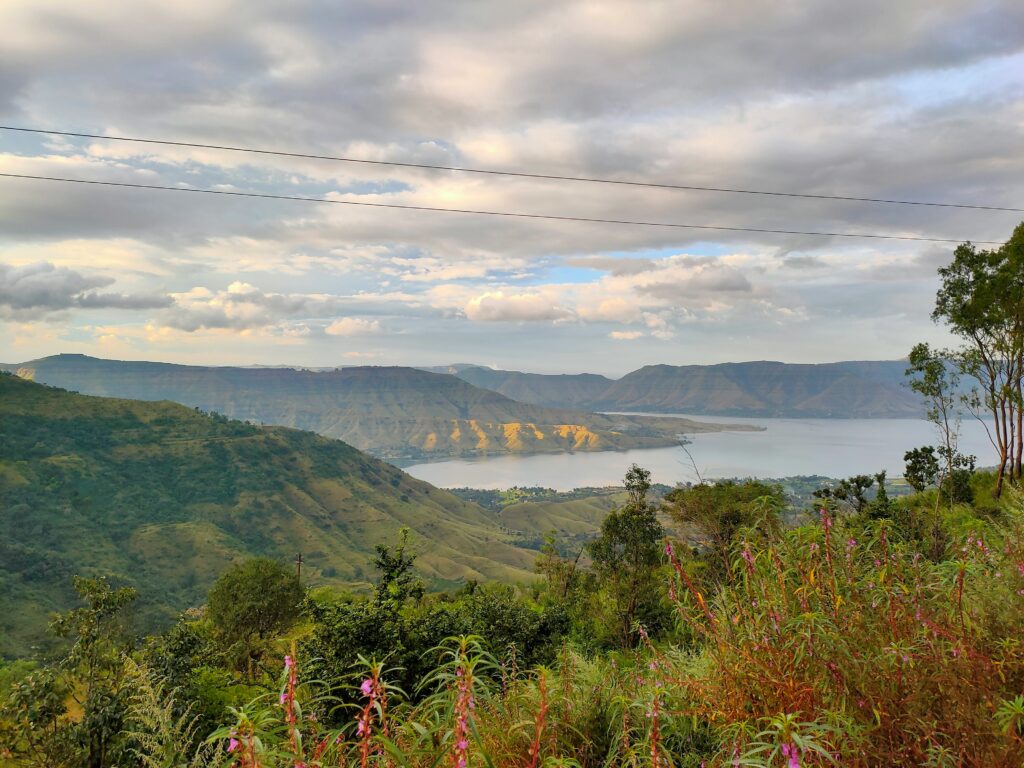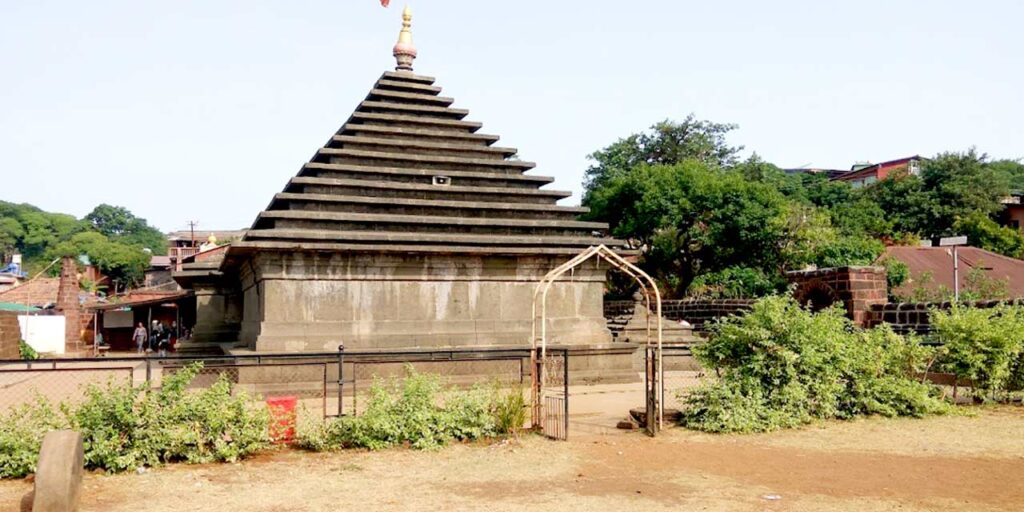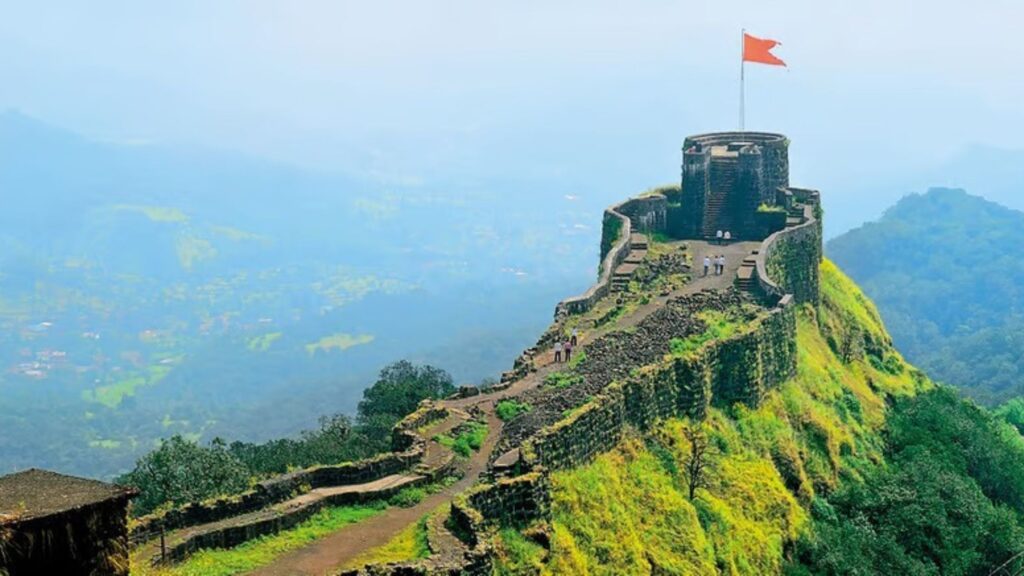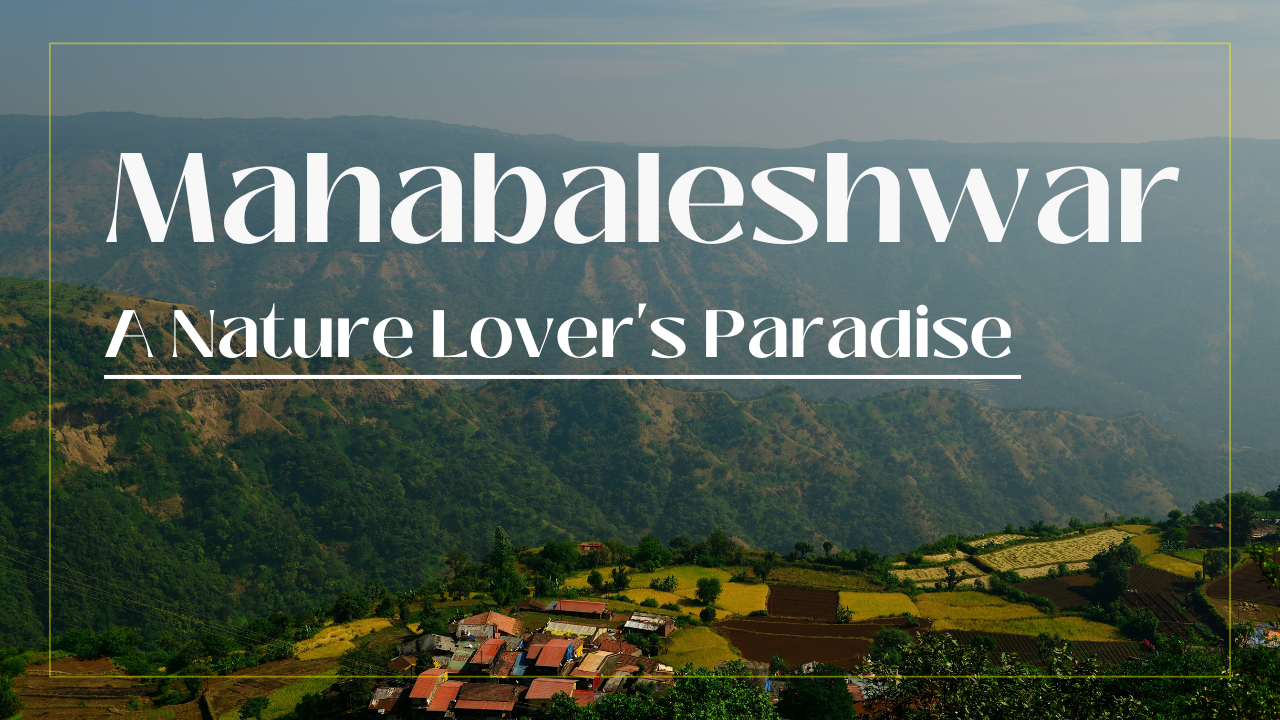Mahabaleshwar and Panchgani are twin hill stations in Maharashtra’s scenic Western Ghats, each with its own set of attractions and a peaceful respite from urban life. Their abundant foliage, comfortable atmosphere, and closeness make them attractive locations for nature lovers, history fans, and adventure seekers. Mahabaleshwar is a scenic hill station in Maharashtra, in the Western Ghats. It is a favorite location for nature lovers, honeymooners, and adventurers due to its stunning scenery, strawberry fields, and mild climate.

Nearby Attraction in Mahabaleshwar:
1. Venna Lake, Mahabaleshwar:
Venna Lake is one of Mahabaleshwar’s most famous attractions, recognized for its tranquil beauty, engaging activities, and family-friendly ambiance. The lake is a popular destination for both visitors and residents, as it is surrounded by beautiful flora and provides a calm setting.
1. Overview:
Location: Central Mahabaleshwar, around 2 kilometers from the main town.
Shri Appa Saheb Maharaja of Satara developed an artificial lake in 1842.
Significance: A picturesque getaway with one of Mahabaleshwar’s major lakes.
2.Key Features:
Lake Area: 28 acres, with a perimeter of around 7-8 kilometers.
Depth is around 10-12 feet, making it excellent for boating.
Scenic Beauty: Surrounded by lush forests, giving a tranquil atmosphere.
3.Activities:
Boating: Choose between rowboats and paddleboats for a pleasant and peaceful excursion.
Boating costs vary depending on the kind and duration.
Horse Riding: Horses are offered for rides along the lake, which is a favorite pastime for both children and adults.
Picnicking: The lake’s edges are great for picnicking and admiring the calm views.
Food stalls: Local sellers provide corn on the cob, bhel puri, ice cream, and strawberry shakes.
2. Mahabaleshwar Temple:
The Mahabaleshwar Temple, also known as the Mahabali Temple, is an important pilgrimage destination in the tranquil hill region of Mahabaleshwar, Maharashtra. This ancient temple, dedicated to Lord Shiva, is well-known for its spiritual importance, architectural splendor, and peaceful environs.
1. Overview:
Deity: Lord Shiva.
Location: Old Mahabaleshwar, approximately 6 kilometers from the town center.
Historical significance: Built in the 16th century by the Maratha emperor Chhatrapati Shivaji Maharaj, a devotee of Lord Shiva.
Architecture: Hemadpanti style, with stone carvings and complex ornamentation.
2. Key Features:
Swayambhu Shivalinga: The temple holds a self-originated black stone Shivalinga called the Mahalingam. It is considered sacred and serves as the focus of devotion.
Panchganga, a sacred pond near the temple, is formed by five rivers (Krishna, Venna, Savitri, Koyna, and Gayatri). Pilgrims frequently take a plunge in the holy waters to purify.
Peaceful surroundings: Surrounded by lush woods and the tranquil highlands of the Western Ghats, devotees enjoy a peaceful environment.
Idols and shrines: The temple complex also has smaller shrines devoted to various deities, such as Lord Vishnu and Goddess Parvati.

3.Elephant’s Head Point, Mahabaleshwar:
Elephant’s Head Point, sometimes called Needle’s Point, is a renowned viewpoint in Mahabaleshwar. This location, known for its distinctive rock formation resembling an elephant’s head and trunk, provides stunning views of the surrounding valleys and hills, making it a must-see site for nature lovers and photographers.
1. Overview:
Location: About 7 kilometers from Mahabaleshwar town center.
Altitude: Approximately 4,000 feet above sea level.
Significance: Named by its stunning likeness to an elephant’s head, complete with “trunk.”
2.Key Features:
Elephant’s Head Point is named by its unique rock formation, which resembles an elephant’s head and trunk.
This geological marvel is a prominent feature of Mahabaleshwar’s scenery.
Enjoy breathtaking panoramic views of the Sahyadri Range, Savitri River, and lowlands below.
The vantage point offers an ideal location for dawn and sunset.
Serenity & Tranquility: Located away from the hustle and bustle of Mahabaleshwar, the region is known for its serene atmosphere.
4.Lingmala Waterfall, Mahabaleshwar:
Lingmala Waterfall is one of Mahabaleshwar’s most gorgeous and quiet attractions. The waterfall, nestled within thick foliage, is a popular destination for nature enthusiasts and photographers looking for stunning vistas and peace.
1. Overview:
Location: On the Mahabaleshwar-Panchgani Road, approximately 6 kilometers from Mahabaleshwar town center.
Type: Seasonal waterfall with cascading streams that plunge from a height of around 600 feet.
The Venna River’s waters provide nourishment.
2.Key Features:
Two Cascades: The main waterfall is the bigger, more spectacular plunge that is seen from a safe distance.
Smaller Waterfall: Visitors may enjoy close-up views and play in the shallow waters.
The lush greenery in the surrounding region creates a relaxing and pleasant atmosphere.
Seasonal Flow: The waterfall is most impressive during the monsoon season (June-September), when the water flows with full force.
5.Pratapgad Fort, Mahabaleshwar:
Pratapgad Fort is one of Maharashtra’s most historically significant forts, situated near Mahabaleshwar. It symbolizes the heroism and heritage of Chhatrapati Shivaji Maharaj, the famous Maratha emperor. The fort is notable for its strategic location, breathtaking vistas, and historical significance, particularly in light of the Battle of Pratapgad in 1659.
1.Overview:
Location: About 24 kilometers from Mahabaleshwar, near the town of Keed.
Chhatrapati Shivaji Maharaj built it in 1656.
Significance: The fort is well-known for Shivaji Maharaj’s victory over the Bijapur Sultanate’s soldiers at the Battle of Pratapgad in 1659, during which the fort played an important role in his defense plan.
Altitude: Approximately 3,500 feet above sea level.
2.Key Features:
The fort is strategically located on a hilltop, providing stunning views of the surrounding countryside, including the Sahyadri mountain range and valleys.
It was erected strategically to defend against enemy incursions and maintain control over the region.
Architectural highlights:
The entrance gate is magnificent and solid, displaying the fort’s military construction.
Shivaji Maharaj Statue: A statue of Shivaji Maharaj sits at the fort’s entrance, commemorating his importance in Maratha history.
Balekilla (Main Fort Area) is the fort’s main area, which has temples, storage chambers, and a massive water tank.
Chhatrapati Shivaji’s shrine: The fort includes a modest shrine dedicated to Shivaji Maharaj, which adds spiritual value to its historical importance.
Mahadarwaza: A large gate that led to the inside of the fort and served as a watchpost for troops.3. Activities.
Historical Exploration: Explore the fort’s remains, including temples, watchtowers, and military constructions that reveal its rich history.
Trekking & Hiking: The fairly tough journey to Pratapgad is ideal for those seeking excitement. The views from the summit are well worth the effort.
The fort provides fantastic picture options, including panoramic vistas, old architecture, and lush foliage.
Picnicking: Enjoy a peaceful lunch in the fort and immerse yourself in history.
To know more history click here

6. Bhilar: The Village of Books, Mahabaleshwar:
Situated in the Satara district of Maharashtra, India, the community of Books is a distinctive and charming community. The idea of transforming Bhilar into India’s first “village of books” was inspired by Hay-on-Wye, a Welsh town famous for its bookstores. To promote literature, art, and culture—particularly Marathi literature—the Maharashtra government started this program in 2017.
Key Features of Bhilar – The Village of Books:
1.Open-Air Libraries: There are a lot of outdoor reading areas and libraries in the hamlet. In Bhilar, homes, temples, and schools have been transformed into peaceful reading areas with a theme.
2.Books in Many Genres: Bhilar has more than 15,000 books, mostly in Marathi but also with titles in Hindi and English. Literature, poetry, biography, science, history, and children’s books are just a few of the many genres they cover.
3.Artistic Murals: Bhilar’s walls are covered in brilliant paintings, murals, and quotations that create a lively, literary atmosphere.
4.Community Involvement: By organizing cultural events and reading groups, the locals take an active part in preserving the village’s literary character.
5.Visitor-Friendly: Book lovers are intended to find refuge in the community. Visitors are welcome to peruse the library, take part in activities, and simply enjoy the calm surroundings.
6.Bhilar is a popular diversion for tourists visiting the area because of its proximity to well-known tourist destinations like Panchgani and Mahabaleshwar.
7. Panchaganga Mandir, Mahabaleshwar:
The Panchaganga Mandir is a historic and sacred temple located in Mahabaleshwar, Maharashtra. It is a revered site known for its architectural beauty and spiritual significance, attracting pilgrims and tourists alike.
Key Features of the Panchaganga Mandir:
1.Interpretation of the Name: “Panchaganga” means “Five Rivers.” Five sacred rivers are said to have their sources in the temple: the Krishna, Koyna, Venna, Savitri, and Gayatri. It is said that the temple’s Gomukh, a stone sculpture resembling a cow’s mouth, is where the confluence of these rivers emerges.
2.Historical Significance: The Yadava kings constructed the temple in the thirteenth century, and the Marathas added to it and decorated it with Chhatrapati Shivaji Maharaj’s help.
3.Design: The temple features elaborate sculptures and carvings in the manner of ancient Hemadpanthi architecture. It is composed of black stone and features intricate patterns that showcase the period’s artistry.
The five rivers’ waters are said to flow from the holy Gomukh, which serves as the center of attention.

Major Attraction in Pachgani
1.Table Land
Table Land is a massive plateau in Panchgani that is considered one of Asia’s greatest natural plateaus. It is a popular tourist destination with beautiful scenery, clean air, and a variety of activities. Its large flat area, bordered by valleys and hills, makes it an ideal destination for nature lovers and adventurers.
1. Overview:
Location: Panchgani, Maharashtra.
Elevation: around 4,550 feet above sea level.
Size: Covering around 95 acres, it is Asia’s second-largest plateau.
Significance: Renowned for its panoramic vistas and as a filming site for Bollywood films.
2. Key Features:
Enjoy stunning views of Krishna Valley, Dhom Dam, and surrounding hills.
Sunrise and sunset here are quite beautiful.
Natural beauty includes a green expanse during monsoon season and brown, rocky landscape in other seasons.
The plateau is interspersed with tiny caves and geological structures.
Devil’s Kitchen is a cluster of tiny caverns along the plateau’s edge.
According to legend, here is where the Pandavas from the Mahabharata prepared their meals.
3. Activities:
Horse riding is a popular activity that allows you to explore the huge plains.
Paragliding from Table Land offers aerial views of Panchgani, making it an exciting adventure activity.
Explore the plateau on foot or on horseback to view caves, cliffs, and beautiful nooks.
The plateau’s broad areas and breathtaking scenery make it an ideal location for photography.
Local Food stalls:
Enjoy native delicacies and beverages from modest merchants dotted throughout the plateau.

2. Parsi Point:
Parsi Point is a magnificent viewpoint in Panchgani that provides sweeping views of the lush green Krishna Valley and the shimmering Dhom Dam backwaters. Its tranquil atmosphere and gorgeous environment make it a popular destination for nature enthusiasts and photographers.
1. Overview:
Location: On the Panchgani-Mahabaleshwar Road, about 2 kilometers from Panchgani town. Significance: Named from its popularity among the Parsi population during the British period. Known for: Stunning vistas, a tranquil setting, and as a stopover for trekkers headed to Mahabaleshwar.
2. Key Features:
Enjoy a scenic view of the Krishna River and Dhom Dam reservoir from above.
Surrounded by rich nature, it’s ideal for leisure and picnics.
The valley’s foggy mornings and vivid sunsets offer great picture opportunity.
Families with children will appreciate the open areas and well-maintained surroundings.
3.Activities:
Enjoy panoramic views of the valley, rivers, and distant hills.
Picnicking requires a tranquil location with seats and wide spaces to relax and enjoy refreshments.
Photography: Capture magnificent sceneries and nature’s calm.
Enjoy native delicacies and beverages from adjacent booths, including corn, bhel puri, and tea.
3.Mapro Garden
Mapro Garden is a major tourist attraction and cuisine paradise in Panchgani, a lovely hill resort. It’s a must-see for both foodies and nature lovers, thanks to its delectable strawberry-based goods and tranquil atmosphere.
1. Overview:
Location: Panchgani-Mahabaleshwar Road, approximately 8 km from Panchgani and 12 km from Mahabaleshwar.
Established by Mapro (Maharashtra Agro Products), a well-known company in fruit processing.
Strawberry products, gorgeous landscapes, and a bustling café are among its highlights. 2. Key Features.
Strawberry Wonderland is known for its fresh, luscious strawberries and strawberry-based delights.
Visitors can try strawberry jams, syrups, and crushes.
Lush Greenery: Well-kept gardens with flowers, herbs, and fruit plants.
A serene atmosphere, ideal for unwinding and appreciating nature.
Guided tours provide an interactive experience for learning about the jam and syrup producing process.
Get free samples of various Mapro products.
Café Delight specializes on strawberry cream, strawberry shakes, and freshly cooked pizzas and sandwiches.
Provides a farm-to-table experience with fresh foods acquired locally. 3.Activities
Shop for jams, jellies, syrups, chocolates, and other processed fruit goods.
Enjoy free samples of syrups, crushes, and chocolates.
Photograph bright gardens, unique installations, and breathtaking landscapes.
Strawberry Festival: Held during the March-April harvest season, it includes strawberry harvesting, traditional dances, and fun activities.
Accessibility for Panchgani & Mahabaleshwar
1. By Road: From Mumbai, Panchgani is approximately 245 kilometers (5-6 hours) away via NH48.
Mahabaleshwar is around 260 kilometers (6-7 hours’ travel) away via NH48.
Both sites are well accessible by road, with numerous buses and taxis departing from Mumbai. From Pune, Panchgani is around 100 kilometers (2-3 hours) away by NH48 and State Highway 72.
Mahabaleshwar is around 120 km (3-4 hours’ drive) away by NH48 and State Highway 72.
Both sites are easily accessible from Pune via conventional taxis, private automobiles, and buses. Local connectivity:
Panchgani and Mahabaleshwar are connected by well-maintained roads, and taxis or local buses are widely available for transportation between the two hill stations.
2. By Train:
The nearest major railway station to Mahabaleshwar is Satara Railway Station, located around 60 kilometers away. Trains from Mumbai, Pune, and other places link to Satara, from whence you may take a cab or a bus to Mahabaleshwar or Panchgani.
3. By Air:
The nearest major airport to Mahabaleshwar is Pune International Airport, located 120 kilometers away. Pune is accessible via flights from large cities like as Mumbai, Delhi, and Bangalore. From Pune, take a cab or bus to Mahabaleshwar.
Pune International Airport is the nearest airport to Panchgani. Flights are available to and from major cities, and the hill station is around a two- to three-hour drive from Pune.
Alternative Airports: Mumbai Airport (260 km from Mahabaleshwar and 240 km from Panchgani) is another alternative, however it is further away from Pune. It is a bigger airport that offers more airline alternatives, particularly for foreign passengers.
Climate of The Mahabaleshwar & Panchgani
1. Summer (March-June)
Temperature: Day: 20°C to 30°C.
Night: 15°C to 20°C.
Weather: Warm days and chilly evenings provide a welcome respite from the heat of the plains.
Clear skies are good for sightseeing and outdoor activities such as hiking and boating.
Best for sightseeing, strawberry picking, and lounging at views.
2. Monsoon (July-September)
Temperature: Day: 15°C to 25°C. Night: 12°C to 20°C. Tropical monsoon
Weather: Heavy rains creates a beautiful green paradise.
The frequent mist and fog create a mysterious environment.
This is the season when waterfalls and streams are at their most spectacular.
Best for: Nature lovers and anyone who appreciate the beauty of rain-soaked landscapes.
Outdoor activities may be limited owing to icy roads and paths.
3. Winter (October – February)
Temperature: Day: 10°C to 20°C.
Night: 5°C to 10°C.
The weather is cool and crisp, with intermittent mist in the mornings.
The air is fresh, and the beautiful skies provide spectacular vistas of valleys and hills.
Best for: Relaxing weekends, touring temples, and attending strawberry festivals.
Tips: Pack warm clothing, especially during frigid evenings.
Best time to visit in mahabaleshwar:
From October to June: Perfect for touring, outdoor sports, and admiring the natural splendor.
Strawberry harvest season runs from March to May, which is ideal for strawberry enthusiasts.
July to September: Perfect for enjoying the monsoon season, but not suitable for adventurous activities.
Read Our Latest Blog Udupi, A Blend of Pilgrimage and Adventure.
To Know More Place visit Ghumtefirte

